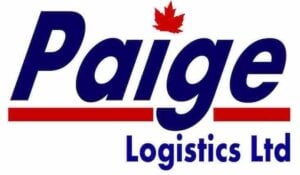What is Flatbed Tarping?
During transport, flatbed load securement with tarps are used to shield cargo from debris, frost, inclement weather, and other damaging elements.
Flatbed trailer tarps are typically available in a variety of materials, sizes, and even functions. In addition, there is no universal solution for these products.
Pre-Tarping Preparations and Safety Measures
To tarp a load, to achieve optimal load security and protection, it is vital to follow a set of best practices during the tarping process.
Ensure that the tarping trucks load is properly secured using appropriate tie-downs, straps, and chains. Additionally, wearing personal protective equipment (PPE), such as gloves and safety glasses, is crucial to ensure personal safety during tarping operations.
Tarping Techniques for Flatbed Loads
Step-by-Step Guide to Effective Flatbed Tarping Techniques
1. Positioning and centering the tarp over the load: Begin by positioning the tarp in the center of the load. This helps achieve an even distribution of tension and reduces the risk of tears or damages.
2. Securing the tarp with appropriate fasteners and tie-downs: Use secure fasteners like bungee cords, ropes, or straps to fasten the tarp to the trailer. Make sure to create sufficient tension to prevent flapping or shifting during transit.
3. Ensuring a tight and secure tarp fit: Pay attention to the edges and corners of the tarp, ensuring they are tight and properly secured. This prevents water infiltration and damage to the cargo.
Weatherproof Tarps for Flatbed Trailers
Weather conditions can pose significant challenges during transportation. To combat adverse weather, opt for waterproof and UV-resistant tarps suitable for different conditions.
Additionally, techniques such as installing bow systems or using tarp tensioners can help prevent water pooling and ensure the tarp’s integrity throughout the journey.
Specialized Tarping Methods for Different Types of Loads
Certain loads or oversized loads require specialized tarping techniques to accommodate their unique characteristics.
Here are some examples:
1. Oversized and irregularly shaped loads: Use custom tarps or tarping systems designed specifically for oversized or irregularly shaped cargo. These solutions provide a snug fit and ensure adequate protection during transit.
2. Construction materials and equipment: Construction cargo often includes heavy machinery, building materials, or scaffolding. Employing reinforced tarps and additional securing mechanisms like ratchet straps and edge protectors can enhance load security.
3. Agricultural and perishable goods: For transporting agricultural products or perishable goods, consider using breathable tarps or specialized covers that allow air circulation while protecting the cargo from external elements.
Essential Tarp Equipment and Accessories
Investing in the right types of flatbed tarps and accessories can significantly enhance load security and streamline tarping operations.
Tarping systems and mechanisms: Explore options like side curtain systems or roll-up tarps that offer efficient and hassle-free tarping solutions.
These systems enable quick access to the LTL load and save valuable time during loading and unloading.
Tarp materials:
Choosing the appropriate tarp material is crucial for load protection. Vinyl tarps are durable and offer excellent resistance to weather conditions, while mesh tarps are lightweight and provide ventilation for certain cargo types. Consider the load requirements and select the most suitable tarp material accordingly.
Safety and Compliance in Tarping Operations
Safety should always be a top priority during tarping operations. Adhere to the following guidelines to ensure a safe and compliant process:
1. Safety guidelines and precautions: Train personnel involved in tarping operations on safety procedures and the proper use of equipment. Emphasize the importance of PPE, such as gloves, safety glasses, and non-slip footwear, to prevent injuries.
2. Compliance with regulations and legal requirements: Familiarize yourself with tarping regulations specific to your region or country. This includes height and weight restrictions for tarping oversized loads and obtaining the necessary permits for certain types of cargo.
Troubleshooting Common Flatbed Tarping System Challenges
Even with proper techniques and equipment, tarping challenges may arise. Here are some common issues and solutions :
1. Tarp tears, rips, or damaged fasteners: Regularly inspect and maintain your tarps and fasteners to identify any damages or signs of wear. Replace or repair them promptly to ensure the tarp’s integrity and load security.
2. Tarp flapping, sagging, or poor fit: Inadequate tension and improper tarp placement can cause flapping or sagging during transit. Revisit the tarping techniques discussed earlier to ensure a tight and secure fit.
Mastering tarping techniques is essential for ensuring the secure transportation of flatbed loads. By following the best practices discussed in this article, you can enhance load security, protect cargo from external factors, and comply with industry regulations.
Invest in the right tarping equipment, rolling tarp trailer and accessories, consider specialized tarping techniques for unique loads, and prioritize safety in all tarping operations. By doing so, you’ll become proficient in tarping and contribute to the overall efficiency and success of your flatbed load trucking service endeavours.
Unsure if a flatbed is the right trailer type to carry your load? Learn about the conestoga trailer.


